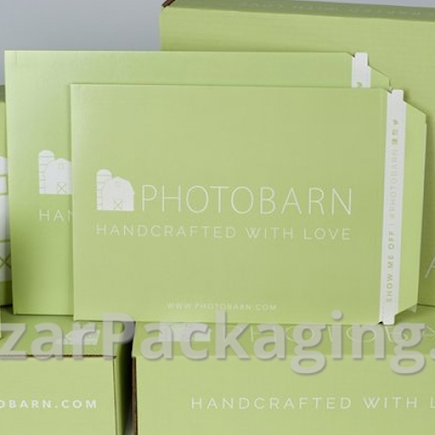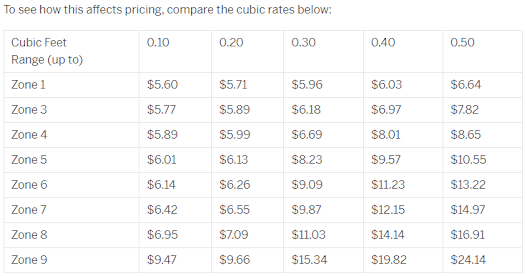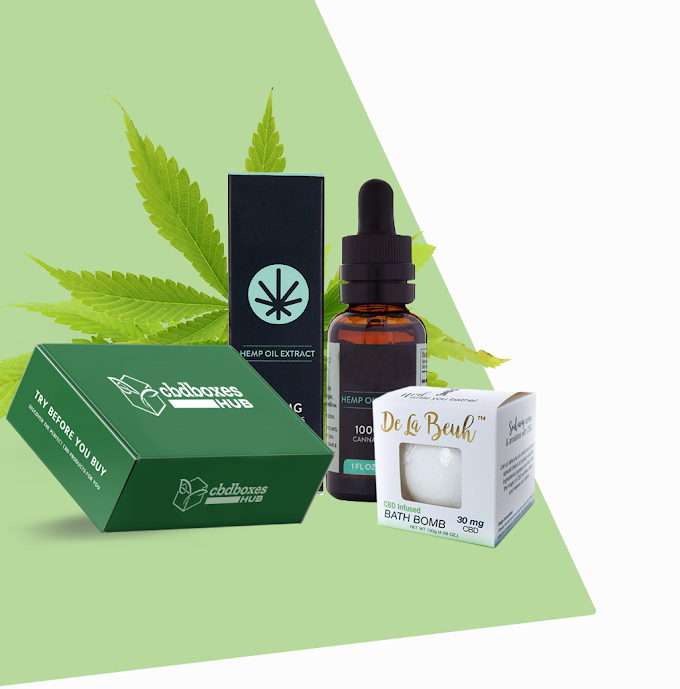 |
| All The Information You Need About Custom Packaging For Subscription Boxes |
If you do it right, your physical
packaging can be a big part of how happy your customers are and even help keep them from leaving. On your packaging, you have control over your brand. It's a visual storyboard that should both excite the customer and help you by telling them what to do and making the
unboxing experience more enjoyable.
It can be hard, though, to plan, design, and order custom packaging. What kinds of containers are there? How does it really come to be? How much should it cost? How many need to be ordered?
All of these are things that owners of subscription businesses should think about as they prepare for their first order. Below, we'll tell you the answers to these and other questions, as well as what to expect and how to handle your first custom packaging order from the beginning to the end.
We've also made this short list to help you make sure you're on track to finish your order:
Everything You Need To Know About Custom Mailer Boxes is Included in This Blog:
- Various Forms of Packaging
- Internet-based or digital printing
- choose a size
- Making a plan for something
- The Importance of Choosing the Correct Printer
- An instance of placing a special order
Part 1: Different kinds of custom packaging
Let's start at the beginning with the different kinds of packaging. Even though many businesses have the word "box" in their name, your subscription business is not limited to packaging in a box. There are many other ways to package, such as:
Padded/Bubble Mailers: These are large envelopes that are made with bubble wrap or another form of padding to protect the contents. This is great for smaller packages or subscription boxes that focus on items that aren't easily broken, like clothing.
 |
| Laserbrain Patch Co. ships their subscription in a gold bubble mailer. Photo credit: My Subscription Addiction |
Mailer boxes are smaller boxes with square sides. They are about the size of a document envelope. This is the best way to ship small items like stationery or jewelry.
 |
| level40two uses a mailer box to protect the pictures, cards, and posters included. |
Custom mailers are regular, flexible envelopes for sending mail that doesn't have any padding. Perfect for things like stationery that are flat.
 |
| Pipsticks EnvelopePipsticks uses a clear, flexible mailing envelope to carry their stickers and assorted crafts. |
Rigid Envelopes: These envelopes use a layer of paperboard to make the package more rigid and durable. They are meant to keep the package from getting damaged (like bending) during shipping. Perfect for flat things.
 |
| A custom rigid mailer for Photo Barn. Photo credit: Salazar Packaging |
When choosing what kind of packaging to use, you should think about what's in the box, how big each item is, and how fragile it is. When sending large or fragile items, a traditional box mailer may be the best choice.
Questions to consider:
What are the biggest things I'll be able to get through my subscription?
What will be the most fragile item in my subscription?
Part 2: How Digital Printing Works in Depth
 |
| A digital, wide-format printing press. |
After you decide what kind of packaging you want, you can start thinking about how you want it to look.
Digital printing is becoming the most common way to print faster than any other method. This works like a normal laserjet printer you might have at home. The machine mixes the inks and puts your colorful design right on the box. It also lets you place small minimum orders and doesn't charge you for custom printing plates or dies. This means that your startup costs will be lower.
Part 3: Getting the Right Size
When deciding what size box to use, you can always look at how other businesses do it. We polled more than 100 active subscription business owners on Cratejoy to find out the most common package sizes. You can see the results below.
| Dimensions | 8 x 8 x 4 | 10 x 6 x 4 | 9 x 6 x 3 |
The next step in the process is to choose the right size box. Even though it may seem like an afterthought, size is very important when it comes to packing your box safely and figuring out how much it will cost to ship. For instance, if you decide to use USPS cubic shipping rates, the size of your box can have a big effect on which price tier it falls into. USPS cubic shipping is usually the cheapest way to ship your subscription. The price of a cubic unit is not based on its weight, but on its size. Follow this formula to figure out how many cubic feet USPS will ship:
Cubic Rate = Length x Width x Height / 1728
(Remember that the longest side can't be longer than 18 inches.)
For example, if your dimensions are 10 inches by 6 inches by 3.75 inches, you get 225 inches divided by 1728 inches, which is 0.13. Then you'd be in the 0.2 range, since it's more than 0.1 cubic rates.
 |
| Note: The one exception to this is if your mailer weighs under 16 oz., which would classify it as First-Class Mail and lead to better (less expensive) rates. |
Why does this matter? Because you can plan how big your box is to cut down on shipping costs.
In the first example, we got 0.13, and if you change the size by just a few inches, to 9 inches by 5 inches by 3.5 inches, you get.09, which is below the 0.1 limit. This means that you can use 0.1 pricing instead of 0.2 pricing and save $0.13 per shipment on average. You save an average of $2.52 per shipment compared to the 0.3 cubic range.
When you go from 0.1 to 0.2, you save almost $150 on shipping for every 1000 subscribers. When you have 10,000 subscribers, your new prices save you about $1,500 per month on shipping costs. Compared to the pricing for 0.3, that's a savings of over $2500 for 1000 subscribers and over $25,000 for 10,000 subscribers.
When choosing your size, keep in mind that the result can have a big effect on your costs.
Part 4: Making a Sketch
Once you've decided on the type and size of packaging, you're ready to start designing!
This step is likely to happen at the same time as the next one, which is picking a printer.
Many digital printing companies, like BoxUp, ClipnBox, Brand in Color, and Arka, now let you design your box branding online, which can be faster. But if you want to play around with a prototype design before you upload it to the printer's site, check out our suggestions.
Since the design process can be different every time, here are some general tips:
- Select your show. For designs that are ready to print, you will probably use Adobe InDesign if you have the Adobe Creative Suite. You could also use Looka to make a simple "starter" logo. Their online logo designer makes it easy and cheap to make designs.
- Think about your colors. If there are too many colors, they might clash or be hard to follow. Keep your branding scheme simple by using only one to three colors.
- Remember to do something (CTAs). Make sure your design has the most impact possible to get the customer excited.
- Think about getting a sample box made. Before you finalize your order, some digital printers (see below) will send you a free sample that is made just for you. These "proofs" are made of hard paperboard instead of the usual corrugated cardboard, but they can be used for early shots of the product. This will also help you decide if you like your design or want to change it.
Part 5: How to Choose the Right Printer
When you're looking for a digital printing company, think about the following:
Finding a printer close by is like finding a product manufacturer close by: it saves you money by cutting down on shipping and freight costs.
Price: Most digital printing companies' websites let you see an estimate of how much your order will cost as you design it. Think about the size and number of items you want to order before you start.
Turnaround Time: Look at how long it takes each company to print and ship your box order and compare the times. (Below, we list the turnaround times for the printers we recommend.) This timeline will affect your overall fulfillment and delivery cycle, as well as how long it takes for your subscribers to get their monthly box.
So, what do Cratejoy's experts say about digital printers?
There are a lot of printing companies out there that do subscription box printing, but we think these three are the best. Take a look!
BoxUp: You may already know that Cratejoy works with BoxUp, which means that Cratejoy merchants can get discounts. The company's wide variety of packaging options, low order minimums (you can order as few as one item! ), unlimited color choices, and quick turnaround time all convinced us of their high quality.
ClipnBox: Like BoxUp, ClipnBox has a quick turnaround, lets you customize your order almost as much as you want, and doesn't have a minimum order size. You can also get instant quotes on their website, so you can figure out how much your packaging will cost before you place an order. Even though ClipnBox only has three types of
packages, they come in three different (and sustainable) materials and custom sizes, which could give your box a unique look. If you are interested, they will send you a free sample box.
Brand in Color: This small business doesn't limit the colors you can choose and has the fastest turnaround time we've seen: 3 days from the time you place your order to the time it ships. They have four different kinds of boxes, including pizza boxes, and can print photos with clear, bright details.
Arka: After you place an order, Arka will send you a printed proof of your design, which was made by one of their designers, within 24 to 48 hours for your approval. Before you approve the final design, they won't print any of your boxes. Also, Arka lets you choose from three types of board for your box and will make it in any size you want.
Part 6: How to Place an Order and Get a Good Price
Think about the box and the ink. Recycled or environmentally friendly packaging and ink may cost more, but depending on your niche, they could be a good fit for your brand.
Remember that there are different kinds of boards. Some printers offer more than one type of box board, but not all do (such as Packlane). Ask your printer what kind of box material they recommend for your box based on the things that will be in it (small or big, fragile or perishable, etc.).
When you order custom packaging, you should usually try to spend less than $2 per box. This is especially true if you order more than 1000 boxes at once. As you compare prices from different printers, write down exactly what makes the prices change, such as the type of box, the material, the order volume brackets, and so on.
What Comes Next
After you've made your first order, think about how you can make more orders and get better rates on your next orders. Set a reminder for yourself 30 days before you run out of boxes so you can order and ship the next batch. You'll have plenty of time to ship, pack, and meet your monthly deadline.















0 Comments